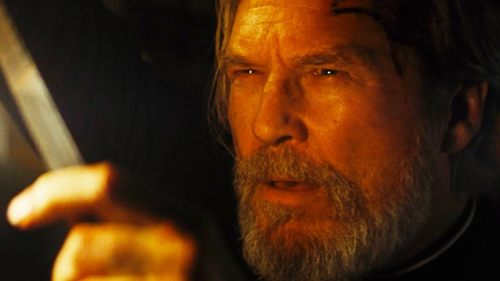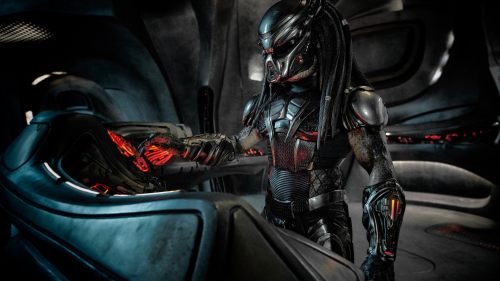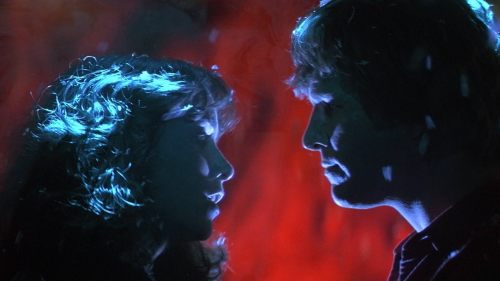CUTTER’S WAY Subverted The ‘80s Buddy Picture Before It Was Born
In honor of The Nice Guys (which you can buy tickets for here), we're kicking off a month of weekly spotlight articles celebrating Shane Black and the subgenres visited by his latest film.
Jeff Bridges has never been as impossibly gorgeous as he is in the first ten minutes of Cutter's Way, when his character Richard Bone struts shirtless through a hotel room after a rendezvous with a wealthy married woman. The idea that movie heroes of old had bodies which would be considered average today is often true, but the lean, sculpted Bridges is a fine exception.
Richard Bone is no hero, however. Exceptional as he may appear on the outside, that body is merely a shell concealing his shriveled character. The mutual exploitation between this gigolo and his conquests (or the women he sees as his conquests) is a harsh taskmaster, no less forgiving than alcoholism or opiate addiction. He's so deep that physical contact provides scant pleasure; boning Bone is a bad decision. "Buy some vitamin E," his latest partner smirks as he covers himself.
On casual inspection Cutter's Way looks like a buddy picture, if a deviant one. Richard Bone is paired with Alex Cutter (John Heard, speaking with a Tom Waits rasp), a one-eyed, one-armed alcoholic veteran. Between them is Cutter's wife Mo (a tremendous Lisa Eichhorn), who drowns her ambitions waiting for Cutter's bitterness and anger to dissipate.
In other hands this might be the story of mismatched friends, simply a two-hander detective yarn. Ivan Passer, working from Jeffrey Alan Fiskin's adaptation of the novel Cutter and Bone by Newton Thornburg, has something else in mind. These characters don't squabble. They snipe. They kneecap one another. Cutter and Bone are the scorpion and the frog, poised in the moment before the arachnid's true nature takes over, though neither man is quite certain who plays which role.
The buddy picture didn't really exist in 1981 when Cutter's Way endured a poor and limited release from United Artists. 48 Hrs. was a year away. Even with a few solid antecedents such as Freebie and the Bean in 1974, the mutation of the mystery thriller into the buddy picture, as truly represented by Shane Black, Joel Silver and Richard Donner's Lethal Weapon, was still to come. Cutter's Way was its own mutation, more like an early '70s Bob Rafaelson picture gone sour sitting out the decade on a windowsill than an '80s action comedy.
The aesthetics of the buddy picture, the banter and violence, are just a cover, like Richard Bone's gold skin and defined abs, to distract audiences while the films examine America's wounds. The blight of crime; unacknowledged effects of a mad war; the cancer of racism; the weakness of unexamined masculine image: all coded into the buddy pictures of the '80s and '90s.
The population of Cutter's Way is riddled with these malignancies, but they are right out in the open. Typically a pointed genre breakdown would come after a rich collection of defining stories. In this case, it happened preemptively.
Driving off into midnight Santa Barbara after his film-opening tryst, Richard Bone experiences the first of the film's many breakdowns. His car stalls in the same alley into which a mysterious man soon dumps the corpse of a young woman. When Bone IDs California oil tycoon JJ Cole as the mystery man, Cutter becomes fixated on taking down Cole. "He's responsible," Cutter spits, "for everything. Him and all the motherfuckers in the world just like him. They're all the same." His concept for revenge: blackmail.
As for evidence, or method, or actual power to see the task through? Forget it. But Cutter is tenacious, especially when he's incensed by Bone's tendency to evade and drift away. And Mo, well, she just wants a life, any life, even if she has to needle her husband by fanning the flame of that candle Richard Bone has held for her over many years.
The script is as slippery as the characters. Their lies, evasions and provocations can be difficult to pin down, and Fiskin's script isn't much interested in clarifying some half truths and shared stories. Is Cutter a racist, or just a bad-mannered drunk who'll disrespect a roomful of people in order to get under Bone's skin? He channels righteous fury into a crusade for the little guy, but he'll use his disability as a shield to cover his own destructive impulses.
Firkin takes his time building the mystery at the center of the picture, before he and director Passer pull back just enough to leave us wondering if there really is a mystery at all, or if Cutter and Bone are simply spinning around their own personal neuroses. The problems driving Cutter crazy are legit - there are those big oil rigs in the waters off the coast of Santa Barbara. And then there's the town's annual appropriation, er, celebration of Mexican culture, the Fiesta, which comes complete with a one-car tribute to the Native Americans who, as Cutter recounts, were "wiped out in less than two hundred years by disease and forced labor... they died with Christ's blessing, happy corpses each and every one!" But does this anti-social duo actually have a finger on what's wrong with America or are they just distracting themselves, as Bone does so often with his "clients"?
The honesty is in the direction, and in Jordan Cronenweth's unobtrusive but perceptive cinematography. He shoots with soft touch for light and shadow, and a very keen sense for capturing that one glance that clears air clouded with half-truths. A few touches in lighting and editing almost elevate the story to strange myth, like the slow-motion opening credits, which suggest inspiration from Peckinpah, or Bone's interrogation by a Santa Barbara police lieutenant in a dark cop's office lit by venetian-blind slashes of light which point directly to Cronenweth's next film, Blade Runner.
No satisfying conclusion awaits. Certainly not on the surface of the story itself, which ends with a tangle of violence and sacrifice. Time has been particularly kind to the film, however, a quiet sort of revenge for the lame release which barely allowed it to limp into theaters back in 1981. The raw performance from Lisa Eichhorn is a gift for anyone who has yet to discover the picture. There's the challenge of grappling with the bitterly united central trio, which can be as captivating as Cutter's own obsession. Now, we can see that the shattered soldier and bronzed layabout were both right. It's all broken; the big guys won, but that doesn't mean there's no reason to fight.



